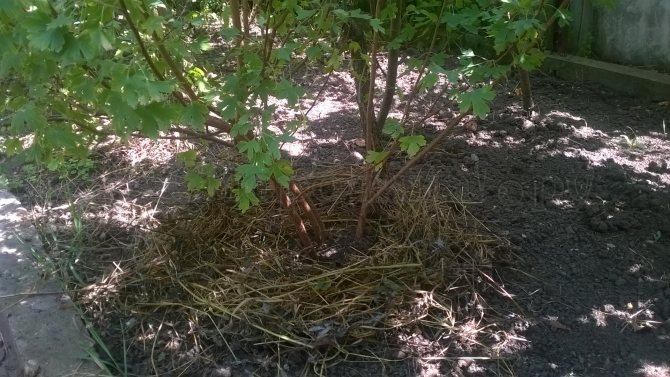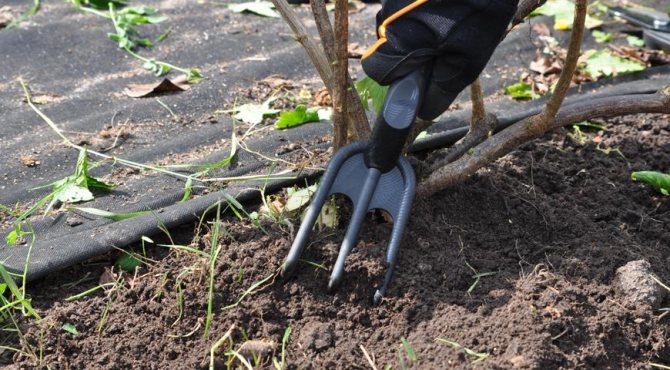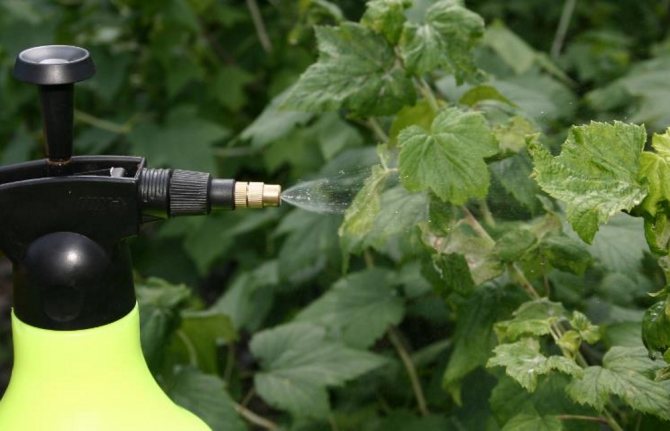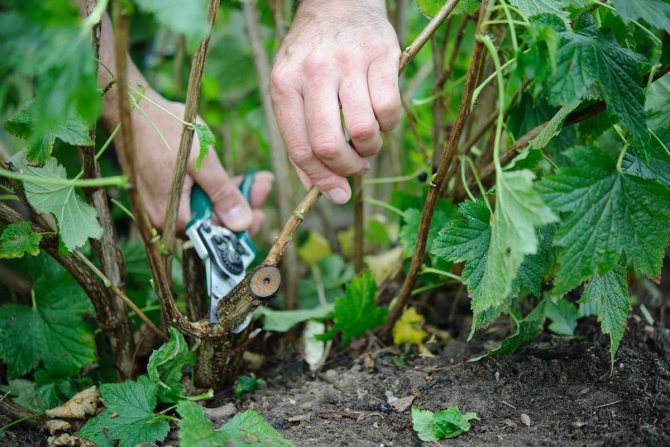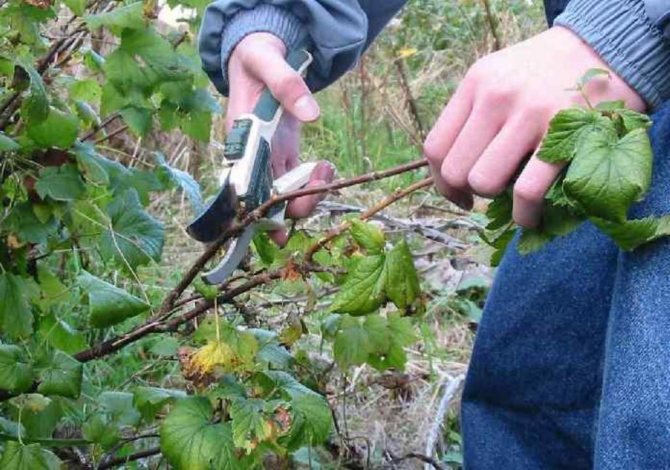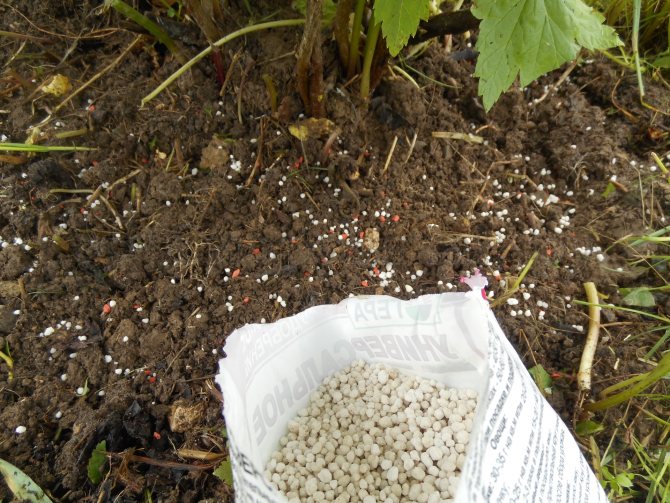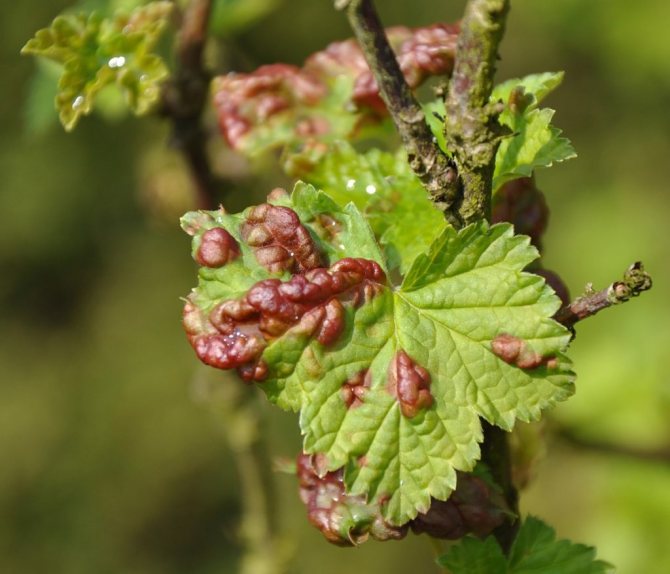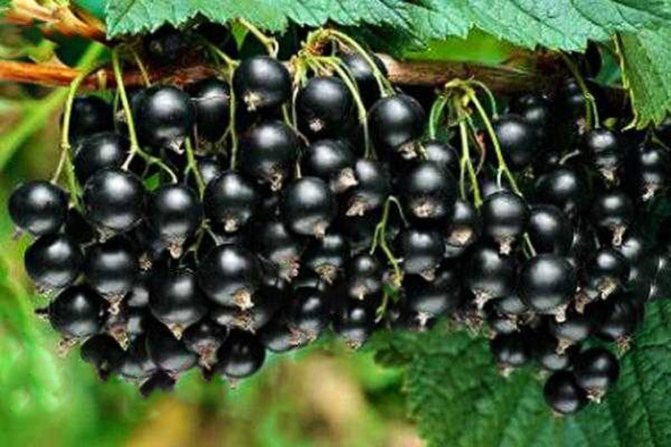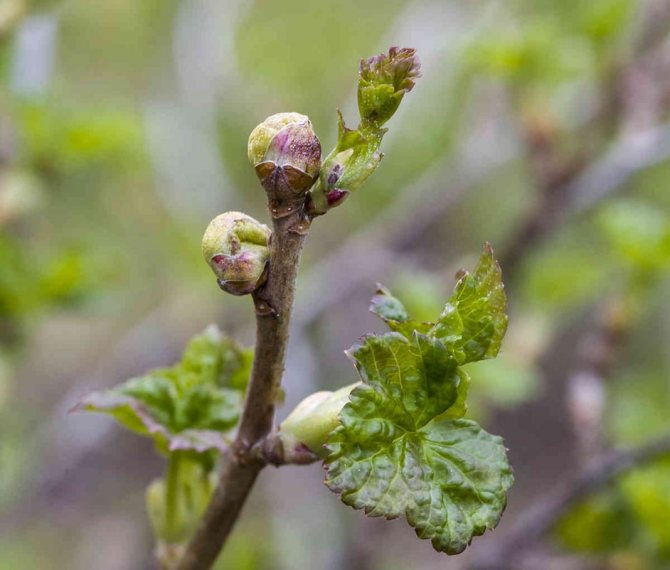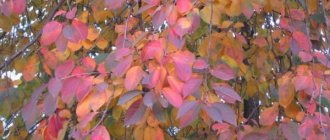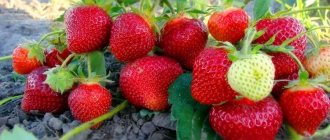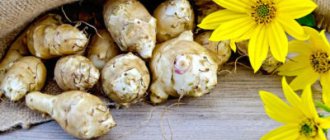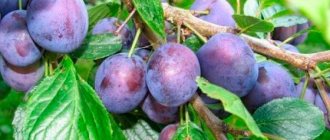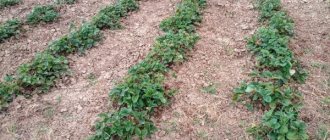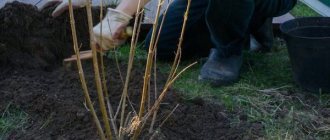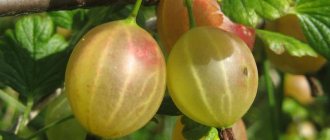Features of caring for currants after harvest
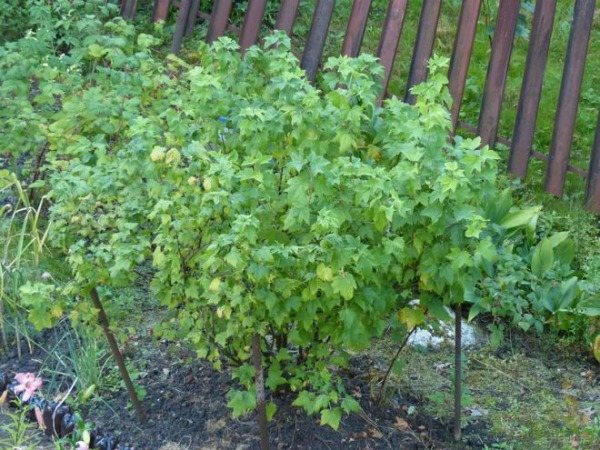
In the middle of summer, currant care depends on the weather and the condition of the plant. After the berries are harvested, the shrub must be carefully examined and determined if it needs any emergency procedures. You may need to do thinning pruning or spray the bushes with pest medications.
Watering rules
Special attention is paid to watering currants during the period when berries ripen and are poured on it, but even after the harvest has returned, the shrub needs moisture if the weather is dry and warm.
According to the rules, after the offering, the currants are watered twice.
- The first watering is carried out in August-September, although some gardeners believe that this is not necessary.
- Pre-winter watering is carried out in mid-October (terms for the middle lane).
For irrigation, use settled, slightly warm water. Usually summer residents do not have any difficulties with this. Water is poured into barrels in advance and warmed up by the sun.
It is best to water the shrub from a watering can with a nozzle - a sprinkler, so the moisture will more evenly saturate the ground.
It is possible to determine the need for watering more accurately, having previously carried out loosening:
- in the event that the soil has dried out to a depth of more than 15 cm, 40 liters of water are poured under the bush;
- if the dry layer is 10 cm thick, 20 liters will suffice;
- when the soil has dried out to a depth of only 5 cm, the currants do not need watering.
In hot weather, mulching the ground after watering can help prevent moisture from evaporating. Sawdust, humus, peat, hay are used as mulch. At the same time, this technique will help to avoid weeding. It is best to water the currants before sunset.
How to feed currants after picking berries
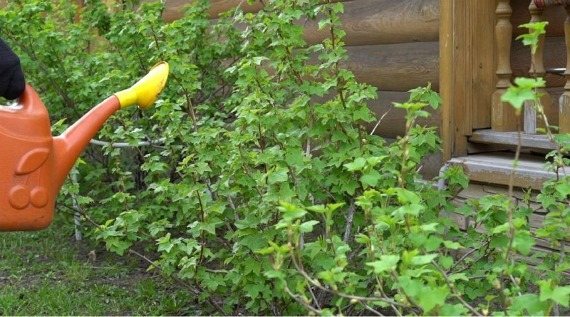

Top dressing after fruiting is no less important for currants than fertilization at earlier stages of the growing season. The procedure will help strengthen the shrub's immunity, restore its strength.
Fertilization is considered part of the preparation of currants for winter. Especially those bushes that are more than 3-4 years old need feeding. By this time, the soil has already exhausted its entire supply of nutrients. Those plants from which a particularly bountiful harvest was collected are also in dire need of feeding. For this purpose, you can use various mineral and organic fertilizers.
Mineral compositions
During this period, currants especially need supplies of potassium and phosphorus. They can be added in the form of superphosphate (1 tablespoon per 10 liters of water), potassium sulfate (1 tablespoon per 10 liters of water) Ammophos is also added here (according to the instructions), since a certain proportion of nitrogen is also necessary for the plant ...
You can use a special complex fertilizer, which contains all the necessary elements. A solution of a complex preparation can be applied by root and foliar method. It is important to know that currants are very fond of phosphorus, but they cannot stand chlorine at all (especially red varieties).
On a note! It is best not to use potassium chloride as a fertilizer for currants.
For those bushes that have given a lot of energy to fruiting, feeding with nitrophos is suitable. With pronounced chlorosis of the leaves, fertilizing with urea is carried out (1 tbsp. L per 10 l of water).Fertilizers are applied to wet soil, so it is better to combine this procedure with watering.
Organic fertilizers
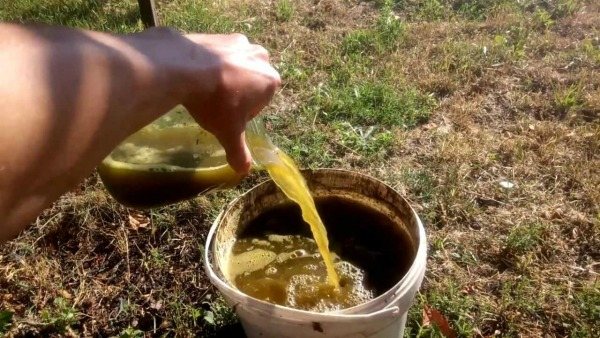

An excellent fertilizer for currants is chicken manure (1 kg per 15 liters of water). It can also be used dry. The so-called "green cocktail" will help to supply the currants with a whole range of nutrients. It is prepared from cut weeds by filling the container half with grass and refilling it with water to the top.
Green fertilizer is being prepared for 5-7 days, because of the pungent smell during the fermentation process, the container must be closed with a lid. The mixture must be stirred periodically. When making a green cocktail, dilute with water in a ratio of 1: 5. Ash is an effective organic fertilizer. It contains a lot of phosphorus, potassium and calcium. Ash is added in an amount of 200 g to 10 l of a solution of a phosphorus-potassium mixture.
When and how to prune correctly
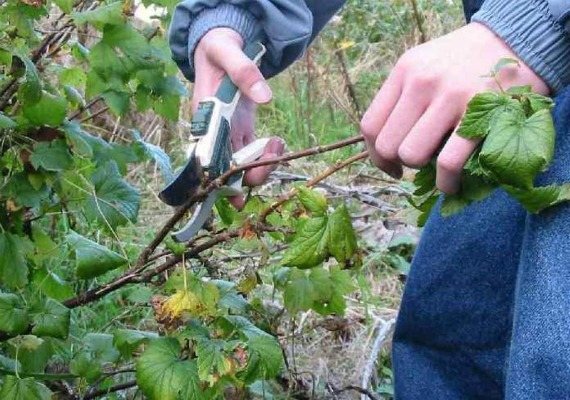

The rules for pruning currants depend on the age of the bushes and their condition. Older plants, starting from a certain age, need anti-aging pruning. Whereas in young currants, the crown is thinned out and a skeleton is formed.
Young bushes
As soon as the berries from the bush are collected, it is necessary to carry out sanitary pruning. Damaged, dried branches and shoots with signs of diseases are removed on the plant. It is also necessary to remove all root growth. If you leave it, the bush will be too thick. Low-lying branches lying on the ground are also subject to pruning.
The annual growth is shortened by about 6-8 cm. At the same time, you can slightly correct the crown of the bush, giving it the correct rounded shape. Pruning is carried out using a sharp pruning shears. Previously, the tool must be disinfected by wiping with alcohol.
Mature bushes
In the fifth year after planting, the crown of the shrub should consist of 5 annuals, 4 two-year, 3 three-year and 3 four-year branches. Obligatory cut out old shoots with brown bark or covered with bloom. There will be no berries on them anyway. You should also remove branches that have almost no growth and have underdeveloped buds. Crooked, too long, improperly growing shoots are removed.
Red and white currants after fruiting in the 4th year of life, 3 old skeletal branches are cut out at the base, giving place to new replacement shoots, of which the three strongest are left.
On black varieties remove old and weakly fruiting branches with a small increment. Of the two growing shoots side by side, one of the strongest is left, cutting off the second at the base.
Pruning
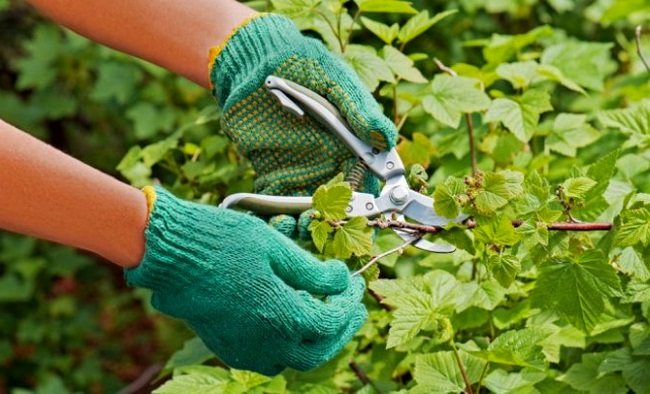

The procedure for pruning fruit shrubs after harvesting berries includes two stages:
- the first is sanitary, implying the removal of weak, damaged and sick branches, as well as shoots, shading bush;
- the second is forming, in the process of which the currant bush is given the correct shape, contributing to abundant fruiting.
If the seedling is not yet three years old, it should not do the forming pruning: they stop at the first, sanitary stage.
rules
The pruner for the procedure must be prepared in advance by carefully sharpening and disinfecting it.
In the process of sanitary pruning, first remove the thickest, oldest shoots, then those branches that have suspicious bloom and damage, are infected with an infection. Then inspect the bush again and remove the shoots thickening the crown: by the way, they can be quite healthy and young.
Those branches that lie on the ground or touch it, remove without hesitation. Both pests and fungus and infection can penetrate from the ground into plant tissues.
Since the fruits of currants are formed on branches of one and two years of age, there is no point in leaving shoots that are more than three years old. They will only thicken the crown in vain and take away strength.
Annual shoots are shortened by 5-8 cm.This measure will help the shrub to become more branched next year.
Pruning should be done carefully so that the fruit buds are not damaged. Cut over the kidneys at a distance of at least 5 mm. The cut angle is 45-50 degrees.
Attention: a healthy, well-fruiting currant bush, should consist of at least 15 full-fledged shoots, not older than three years of age: zero, one-year and two-year-olds.
What to cut:
- shoots older than 3 years;
- all old branches;
- branches are young, but thickening the crown, growing inside the shrub;
- damaged by pests and diseases, weak shoots.
Burn all trimmed material to stop the spread of infections and pests in the area. The pruning procedure should be carried out annually, all cuts after it are processed with a pitch. After the procedure, it is recommended to intensively feed the currants in August so that the shrub will recover faster.
Prevention of diseases and pests
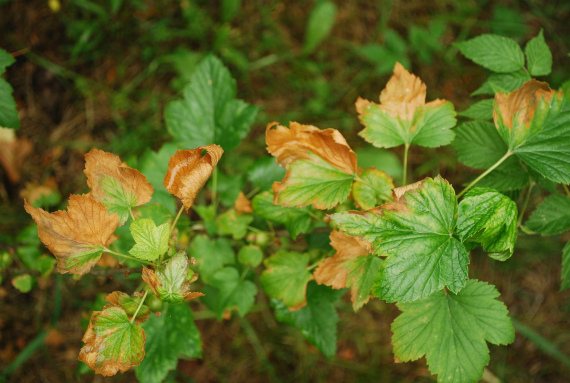

All kinds of pests are very fond of currants. She often suffers from various diseases. These are mainly fungal diseases:
- anthracnose;
- brown spotting;
- septoria;
- goblet rust;
- powdery mildew.
The shrub should be regularly inspected for symptoms of infection. To protect the currants from leaf rollers, glass butterflies, bedbugs, it is necessary to use insecticidal agents. For this purpose, drugs such as:
- Actellik;
- Aktara;
- "Bazudin";
- "Microcin" and a number of others.
Fungicides will help to cope with fungal diseases. Use for processing:
- Fundazol;
- "Topaz";
- "Maxim";
- "Vectra";
- "Vitaros";
- "Discor".
After the harvest is harvested, you can not be afraid to use chemical preparations, since they will no longer cause harm. During fruiting, it is better to choose folk remedies and biological products that do not accumulate in the fruit.
Aphids on currants, how to deal with folk remedies
On currants, red spots on the leaves - what to do, how to treat
Safety engineering
In order not to harm the plant and the health of the gardener, the following rules must be observed:
- process the bushes with fresh solution;
- do not increase the dosage if there are no such recommendations in the instructions for use of the drug;
- spray only after sunset, otherwise burns may occur;
- processing of bushes with berries is carried out 1 week before full ripening;
- it is necessary to carry out the processing of bushes in special clothing;
- after spraying, the fruits are not eaten.
If the working solution gets on the skin or mucous membranes, rinse the area with clean water.
Propagation of currants by cuttings
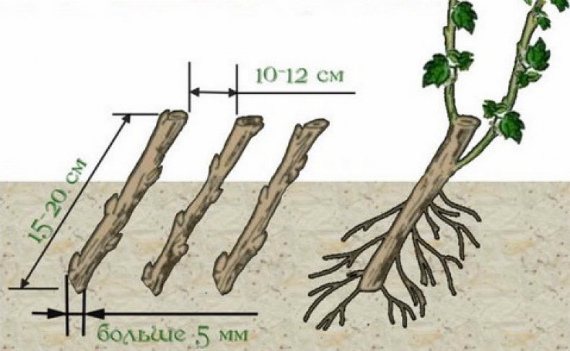

Cutting is a popular method of plant propagation and may well be used for currants, while the seedling will inherit all the qualities of the mother bush. Usually up to 80% of cuttings take root, which is considered a very good indicator.
Breeding material is taken from 3-4-year-old bushes, the harvest of which is completely satisfied, in July-August.
For cuttings, green, non-lignified shoots are cut. They should be flexible, brownish-green in color. It is better to do work in cool weather. It is recommended to take the middle part of the shoot as a planting material. The upper cut is made 1 cm higher than the kidney, it should be even.
The lower cut should be 1 cm below the kidney, it is made obliquely. It is better to use a sharp knife with a thin blade as a tool. The length of the cutting should be 8-12 cm. There should be 3-4 leaves on it. The lower leaves are shortened by half.
It is most convenient to harvest cuttings during pruning. Before planting, they can be stored by wrapping them in a damp cloth. For faster rooting, the planting material is soaked in Heteroauxin a day before planting.From above, the cuttings must be covered with foil, cans, bottles or other containers.
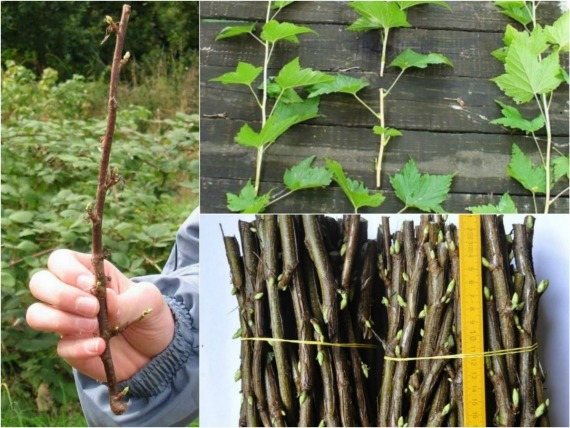

The direct sun is destructive for them, so you need to organize shading. To do this, you can whitewash the jars or throw gauze over them. Cuttings are planted in a school, seated next spring. When planting, it is necessary to maintain an interval between cuttings of 5 cm. A little more space should be left between the rows. The cuttings are deepened by 2-3 cm, placing them at an angle of 45 degrees.
On a note! At first, seedlings need to be sprayed frequently (4-5 times a day) and watered regularly.
The rooting process usually takes 2-3 weeks. After that, currants need less moisture. To prepare for winter, seedlings are fed with ammonium sulfate or ammonium nitrate - this will enhance the process of photosynthesis, allow starch to accumulate and successfully overwinter. Fruiting of such plants will begin in 2-3 years.
Biological remedies
The advantage of drugs belonging to this category is that they do not affect the human body. Therefore, they are popular with gardeners.
"Lepidocide"
Black currant is processed from lepidoptera insects and larvae. A high concentration of the drug helps not only to get rid of pests, but also inhibits their reproductive function.
The exposure time of the drug is a day. The product is environmentally friendly, combined with other drugs.
Cons - affects only a limited circle of insects, if necessary, repeat the treatment, not applied over a large area.
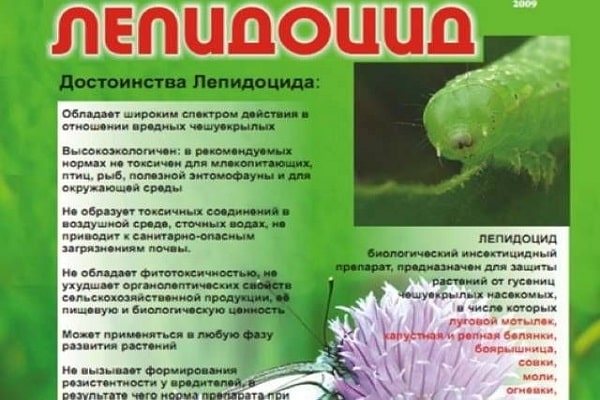

"Trichodermin"
It is used not only for black currant, but also for others. In addition to preventing and treating diseases, the drug helps to increase immunity and plant growth.
It does not harm a person, the fruits are eaten on the same day, it is only necessary to rinse.
Cannot be used in conjunction with chemistry.
Of the means of protection, only gloves are used, the rest are unnecessary.
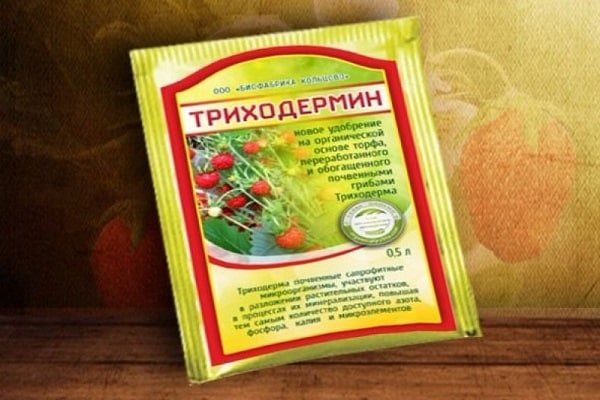

"Fitop"
The drug is gaining popularity every year. Fights against pathogenic microflora, which is formed as a result of the vital activity of insects. For the pests themselves, it is not dangerous.
When processed with this agent, black currants receive not only preventive treatment, but also nutrition, as from humic fertilizer.
"Fitop" goes well with chemical means of protection, has one drawback - it does not destroy insects.
"Dendrobacillin"
Affects deciduous insects. Acts on the pest through the food system. The insect dies 2.5-3 days after spraying.
Wide range of applications, "Dendrobacillin" is effective against many insects. Not harmful to the environment.
A high concentration of the drug has a low degree of toxicity, rapidly disintegrates.
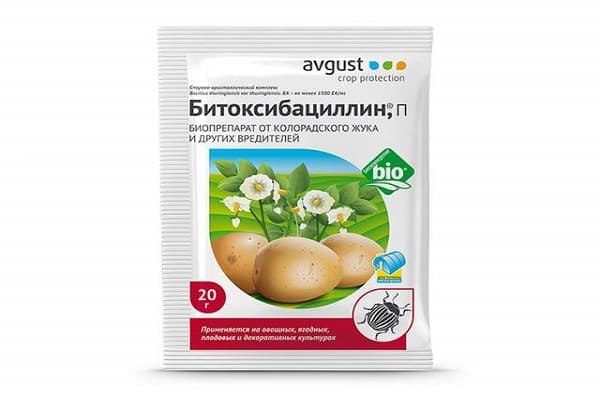

Preparing currant bushes for winter
Currants can survive the winter without additional care, but it is still desirable to help her. If you do not properly prepare the shrub for wintering, every year the harvest will become increasingly scarce and lose quality. The bush does not need shelter, as it calmly tolerates frost up to -30 degrees. However, the plant needs other treatments.


If you didn't manage to do formative pruning in early spring or summer, it's time to do it in the fall. First, the damaged, diseased, dried branches are removed, then the root shoots and branches lying on the ground are cut out. All plant residues must be burned off site. Do the same with fallen leaves.
To prevent the winter winds from breaking the bush, after pruning, the currants are pulled together with twine in a spiral. The land under the bush must be weeded out and loosened deeply. Before loosening, the bushes are sprayed with a urea solution (1.5 tablespoons per bucket of water), and in the process of loosening, phosphorus-potassium fertilizers are applied, spending 30-40 g per square meter of planting.
After the soil has been cultivated, it is covered with a mulch layer 10 cm thick. As soon as the snow falls, it is thrown under the bushes and compacted. If possible, you can completely cover the shrub with snow, such a wintering will benefit him.
Tillage
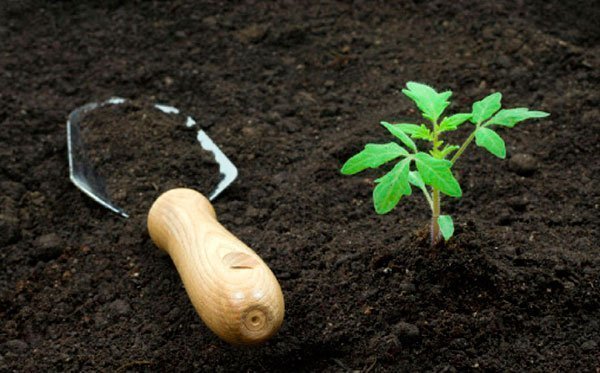

Not only the shrub should be cared for after fruiting, but also the soil in which it grows. It is imperative to dig up the soil in the near-trunk circle. This procedure must be carried out carefully so as not to hurt the roots of the plant. Step back about a meter from the center of the bush.
It is not necessary to loosen very deeply: especially if the currant is black. Roots damaged by a shovel winter worse, they may not have time to heal at all before frost. The depth of digging is about a third of the length of the blade of a bayonet shovel.
For care, the layers of earth must be turned inside out in order to get rid of pest colonies. Do not break the layers so that in the spring they can help moisture to stay in the soil longer.
When the soil is dug up, water it and mulch with a layer of dry soil or humus. The mulching procedure is aimed at protecting the roots from drying out, freezing, and the mulch layer also prevents the germination of weeds.
Gardening tips
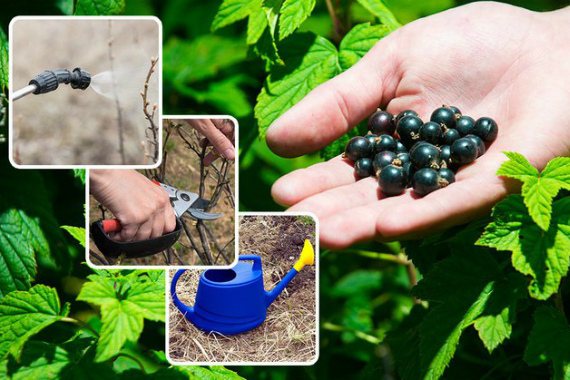

Experienced gardeners are always ready to share their experience in growing currants. They suggest paying attention to the following:
- If the currants begin to fade in the sun, then it is too hot, the bushes need shading. You can plant tall annuals such as sunflowers and corn on the south side, or build a canopy.
- It is necessary to plant bushes according to a certain pattern. For straight-growing varieties, an interval of 1 m is sufficient. When planting spreading currants, a distance of 2 times is left between the plants.
- Before planting currants, you need to do a soil acidity test. If the soil is too acidic, liming is necessary.
- When planting, the bush is deepened by 5-6 cm compared to the original height. This technique promotes the growth of additional roots and shoots.
- Since currants are susceptible to various diseases, it is better to opt for varieties that have complex resistance to various diseases.
- Remember to feed the bushes every year. The first feeding is done during the flowering period, the second - at the stage of ovary formation. Then fertilizer is applied after harvest and in preparation for winter.
- Currants are never planted close to the fence or buildings, as this significantly reduces the amount of the crop.
- In order for the currant berries to be large, it is necessary to plant bushes of different varieties nearby for cross-pollination.
- Some summer residents prefer to grow currants on a trunk. The standard bush has a higher yield and, moreover, serves as an excellent decoration for landscape design.
- If there is a desire to quickly get a fruiting plant of a rare variety, then you can use the grafting method, having previously studied the chances of compatibility between the rootstock and the scion.
Currant after harvest. Make it a must - video
Care for currants after fruiting - video
Despite the whimsicality, currants need care at every stage of the growing season. If properly cared for, the shrub will remain strong, healthy and fruitful, and the quality of the berries will be flawless.

